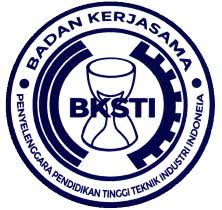Deep Learning Based Recommendation System for Employee Retention Using Bipartite Link Prediction
DOI:
https://doi.org/10.30656/intech.v11i1.10069Keywords:
Bipartite, Deep Learning, Employee Retention, Link Prediction, Recommendation SystemAbstract
The Human Resources (HR) department faces significant challenges in employee retention. Traditional methods, such as performance evaluations and career development using regression, association, and clustering, have been widely used and have yielded positive results. However, these approaches are limited in predicting changes in employee behaviour and capturing complex relationships between variables. In this study, we leverage AI advancements to enhance predictive analysis by utilizing deep learning’s ability to identify patterns and complex relationships while continuously adapting to employee behavior changes. Specifically, we integrate Graph Convolutional Network (GCN) deep learning-based and bipartite graph-based approaches to construct a robust link prediction model. The bipartite employee-training network serves as input to the GCN, where each convolutional layer aggregates information from neighboring nodes, leveraging observed link information at each hidden layer. During the evaluation phase, the model iteratively aggregates information until an optimal state is reached, uncovering hidden relationship patterns that facilitate employee skill development. Empirical results on a benchmark dataset demonstrate significant performance improvements, with precision, recall, and AUC metrics exceeding 80%, highlighting the model's effectiveness in enhancing employee retention.
Downloads
References
Abd-El-Salam, E. M. (2023). Exploring factors affecting Employee Loyalty through the relationship between Service Quality and Management Commitment a case study analysis in the iron and steel industry Al Ezz Dekheila Steel Company in Egypt. Cogent Business & Management, 10(2). https://doi.org/10.1080/23311975.2023.2212492
Angrave, D., Charlwood, A., Kirkpatrick, I., Lawrence, M., & Stuart, M. (2016). HR and analytics: why HR is set to fail the big data challenge. Human Resource Management Journal, 26(1), 1–11. https://doi.org/10.1111/1748-8583.12090
Basnet, S. (2024). The Impact of AI-Driven Predictive Analytics on Employee Retention Strategies. September. https://doi.org/10.52403/ijrr.20240906
Berhil, S., Benlahmar, H., & Labani, N. (2019). A review paper on artificial intelligence at the service of human resources management. Indonesian Journal of Electrical Engineering and Computer Science, 18(1), 32–40. https://doi.org/10.11591/ijeecs.v18.i1.pp32-40
Bilderback, S. L., & Miller, G. J. (2023). Importance of employee development programs in business. Journal of Management Development, 42(4), 327–336. https://doi.org/10.1108/JMD-03-2022-0054
Chaudhuri, A., & Raghunathan, S. (2021). The impact of artificial intelligence on HR practices: A systematic literature review. Human Resource Management Review, 31(3), 100-112.
https://doi.org/10.13140/RG.2.2.12291.72480
Dachner, A., Ellingson, J., Noe, R. and Saxton, B. (2021), “The future of employee development”, Human Resource Management Review, Vol. 31 No. 2, 100732. https://doi.org/10.1016/j.hrmr.2019.100732
Davenport, B. T. H., & Prusak, L. (1998). Working knowledge: how organizations manage what they know. Choice Reviews Online, 35(09), 35-5167-35–5167. https://doi.org/10.5860/choice.35-5167
Dziuba, Szymon T., et al. "Employees’ Job Satisfaction and their Work Performance as Elements Influencing Work Safety" System Safety: Human - Technical Facility - Environment, vol. 2, no. 1, Sciendo, 2020, pp. 18-25. https://doi.org/10.2478/czoto-2020-0003
Eddy Supriyadinata Gorda, A. A. N., Wardani, K. D. K. A., & Saputra, I. G. N. W. H. (2024). Beyond Automation: A Systematic Review of AI in Employee Recruitment. 2024 10th International Conference on Smart Computing and Communication, ICSCC 2024, 666–670. https://doi.org/10.1109/ICSCC62041.2024.10690629
Ismartaya, Kartini, T., Nur Halizah, I., & Apriyadi, D. (2023). The Influence Of Organizational Culture And Work Environment On Employee Performance With Work Motivation As A Variable Intervening. Jurnal Manajemen Industri Dan Logistik (JMIL), 7, 347–360. https://jurnal.poltekapp.ac.id/index.php/JMIL/article/view/1382
Nath, P. (2022), “Perspectives on the changing face of employee development”, NHRD Network Journal, Vol. 15 No. 3, pp. 337-344, https://doi.org/10.1177/26314541221092253
Liu, P., Wei, H., Hou, X., Shen, J., He, S., Shen, K. Q., Chen, Z., Borisyuk, F., Hewlett, D., Wu, L., Veeraraghavan, S., Tsun, A., Jiang, C., & Zhang, W. (2024). LinkSAGE: Optimizing Job Matching Using Graph Neural Networks. http://arxiv.org/abs/2402.13430
Liu, W., Zhang, Y., Wang, J., He, Y., Caverlee, J., Chan, P. P. K., Yeung, D. S., & Heng, P. A. (2022). Item Relationship Graph Neural Networks for E-Commerce. IEEE Transactions on Neural Networks and Learning Systems, 33(9), 4785–4799. https://doi.org/10.1109/TNNLS.2021.3060872
Ma, X., Tan, S., Xie, X., Zhong, X., & Deng, J. (2022). Joint multi-label learning and feature extraction for temporal link prediction. Pattern Recognition, 121, 108216. https://doi.org/10.1016/j.patcog.2021.108216
Murugesan, U., Subramanian, P., Srivastava, S., & Dwivedi, A. (2023). A study of Artificial Intelligence impacts on Human Resource Digitalization in Industry 4.0. Decision Analytics Journal, 7(April), 100249. https://doi.org/10.1016/j.dajour.2023.100249
Opatha, H. H. D. P. ., & Uresha, K. . (2020). HRM and its Impact on Employee Happiness: An Empirical Study on Sri Lankan Employees. Asian Journal of Social Sciences and Management Studies, 7(2), 114–123. https://doi.org/10.20448/journal.500.2020.72.114.123
Porter, L. W., & Lawler, E. E. (1968). Managerial Attitudes and Performance. Homewood, IL: Dorsey Press.
Rahman, M., Islam, M. R., Bala, P., & Sattar, A. (2024). Analyzing Employee Retention Factors using Machine Learning. 2024 4th International Conference on Advances in Electrical, Computing, Communication and Sustainable Technologies, ICAECT 2024. https://doi.org/10.1109/ICAECT60202.2024.10469009
Siregar, I. M., Pratama, D., & Himawan, C. (2024). Penggunaan Jaccard Similarity Coefficient dalam Optimasi Proses Rekrutmen Karyawan Berbasis Profil dan Kompetensi. SINTECH (Science and Information Technology) Journal, 7(2), 101–111. https://doi.org/10.31598/sintechjournal.v7i2.1617
Ullman, J. (2024). Artificial Intelligence Integration in Human Resources : Impacts on Job Artificial Intelligence Integration in Human Resources : Impacts on Job Performance and Ethical Considerations. July.
Wan, F. W. Y., Tan, S. K., & Mohammad, T. M. I. (2016). Herzberg ’ s Two-Factor Theory on Work Motivation : Does it Work for Today’s Environment? Global Journal of Commerce & Management Perspective, 2(September 2013), 18–22. https://www.researchgate.net/publication/262639924
Wang, F., Dong, J., Lu, W., & Xu, S. (2023). Collaboration prediction based on multilayer all-author tripartite citation networks: A case study of gene editing. Journal of Informetrics, 17(1). https://doi.org/10.1016/j.joi.2022.101374
Yao, Y., Cheng, T., Li, X., He, Y., Yang, F., Li, T., Liu, Z., & Xu, Z. (2023). Link prediction based on the mutual information with high-order clustering structure of nodes in complex networks. Physica A: Statistical Mechanics and Its Applications, 610. https://doi.org/10.1016/j.physa.2022.128428
Downloads
Published
Issue
Section
License
Copyright (c) 2025 Ivan Michael Siregar, Zulaiha Ali Othman, Azuraliza Abu Bakar

This work is licensed under a Creative Commons Attribution-ShareAlike 4.0 International License.








.png)
.png)
.png)



.png)

.png)
